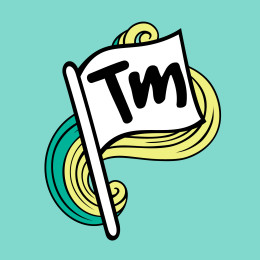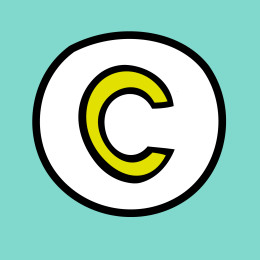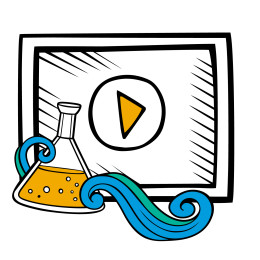
Did you know you might be the owner of intellectual property?
If you’ve ever created something original, you just might be an intellectual property owner! Intellectual property, or “IP” for short, refers to “creations of the mind.” In other words, it’s something from your imagination. These creations can be things like an invention, a brand name or logo, a story, a song, or a secret recipe. You’ll probably want to protect your IP to make sure other people don’t use, copy, sell, or make your intellectual property.
There are four types of intellectual property rights that protect different creations: patents, trademarks, copyright, and trade secrets. For each type of intellectual property rights, there are some requirements that need to be met in order to obtain protection for your idea. Let’s explore the different types of intellectual property rights and figure out which ones might apply to the things you’ve made, and the steps needed to protect your creation.

Patents
A patent is one way inventors can protect their inventions. They give an inventor the right to exclude others from making, using, selling, or offering the invention for sale, and from importing the invention into the United States for a limited time. A U.S. Patent is effective only within the United States.
Utility patents are for new and useful inventions. In exchange for the rights granted by a patent, the inventor is required to disclose (make public), their invention. A patent includes a disclosure (what the invention is, how it works and how to make it). The disclosure includes a specification, claim(s), and any drawings that describe the invention.
One of the cool things about the U.S. patent system is that it enables scientific progress. The Founding Fathers wanted to make sure that society benefits through scientific discovery and continual technological improvement. Anyone in the world can view a published patent in the USPTO’s Patent Search database, learn from the inventor’s work, and make improvements. We’re surrounded every day by inventions that were improvements on previous inventions: Think about how cars have evolved in the last hundred years, or phones – pretty much every technology we use daily is an improvement on a previous technology. That evolution is thanks to the patent system and the genius of inventors like you.
If you need help searching for any patents or more check out a Patent and Trademark Resource Center (PTRC) near you.
Check out our Young Inventor spotlights to learn about how some student inventors secured patents for their inventions.

Trademarks
A trademark is any word, phrase, symbol, design, or combination used to identify the source of goods or services and distinguish it from other sources. They are an essential part of any successful business, because they help people know who makes or sells a product or service.
Trademarks are how you build a brand that potential customers can immediately recognize and trust. The most common trademarks are the names of a good, product, or service, but they can also be logos, slogans, jingles – even certain smells can be a trademark!
Branding your creation might seem less important than creating, manufacturing, or delivering it to a customer, but a strong brand can have huge benefits. Put yourself in a customer’s shoes: If someone is choosing between two very similar products sold by different companies, a thoughtfully designed brand can push their decision toward one product or the other.
If they meet certain criteria, trademarks can be registered with the USPTO to provide extra legal protection. These marks can use the “circle R” symbol: ®. Unregistered trademarks can use the “TM” symbol: ™.
Learn how to protect your trademark through the federal registration process on our Trademark basics page.
If you need help searching for any Trademarks or more check out a Patent and Trademark Resource Center (PTRC) near you.

Copyright
Copyright is the law that protects original creative works. Books, plays, movies, music, computer code, architecture, photos, sculpture, and art are all examples of creative works protected by copyright.
The two requirements for copyright protection are originality (did you create it yourself without copying someone else?) and what is called fixation (is your creation “fixed” by writing it down on a piece of paper, making a recording of it, saving a photograph to a camera roll, or putting it into some other form that other people can see and reproduce it?). If a creative work meets these two requirements, copyright is automatically granted.
You are probably already a copyright owner! Just like the other forms of IP, the most important thing is making your idea real in some way by writing it down, drawing a picture, or making a recording. If you’ve ever done that – for example, making artwork for a class assignment, taking photographs just for fun, or writing a story or song to entertain your friends – you are an author and owner of copyright.
As a copyright owner, you decide who gets to use, copy, distribute, or create what are called “derivative works” – other works based on your work (for example, a TV show based on a book). Even though copyright is automatically granted once the creative work is “fixed,” you can protect your creation even more by registering it with the U.S. Copyright Office.

Trade Secrets
A trade secret is any information kept secret because it has economic value. To be a trade secret, the information must be valuable to others and the owner of the trade secret must go out of their way to keep it safe.
Imagine you own a bakery that sells a special kind of cake: You and your employees are the only people who know the recipe, and no one else in the world can make this special cake. That means your recipe has economic value – you can profit simply by being the only bakery where customers can buy this special cake! Your special cake recipe is a trade secret. If you don’t take steps to protect your recipe and it gets out to a competing bakery across town, it’s no longer a trade secret.
There’s no official registration for trade secrets – in fact, registering the secret would make it no longer a secret! But there are ways for other people to legitimately figure out your trade secrets, such as independently coming up with the same invention or through reverse engineering.
Some of the most well-known trade secrets are the formula for the Coca-Cola® soft drink, the Kentucky Fried Chicken® fried chicken recipe, the Google® search algorithm, the ingredients and process for making Lena Blackburne’s baseball rubbing mud, and the Hershey’s® chocolate recipe. Famously, the only written formula for the Coca-Cola soft drink is kept in a secure vault and, according to the company, is known by only two people at one time.
Check out it out!
See more resources to help your IP knowledge.

Videos and activities for grades K-12

Young Inventor Spotlights



